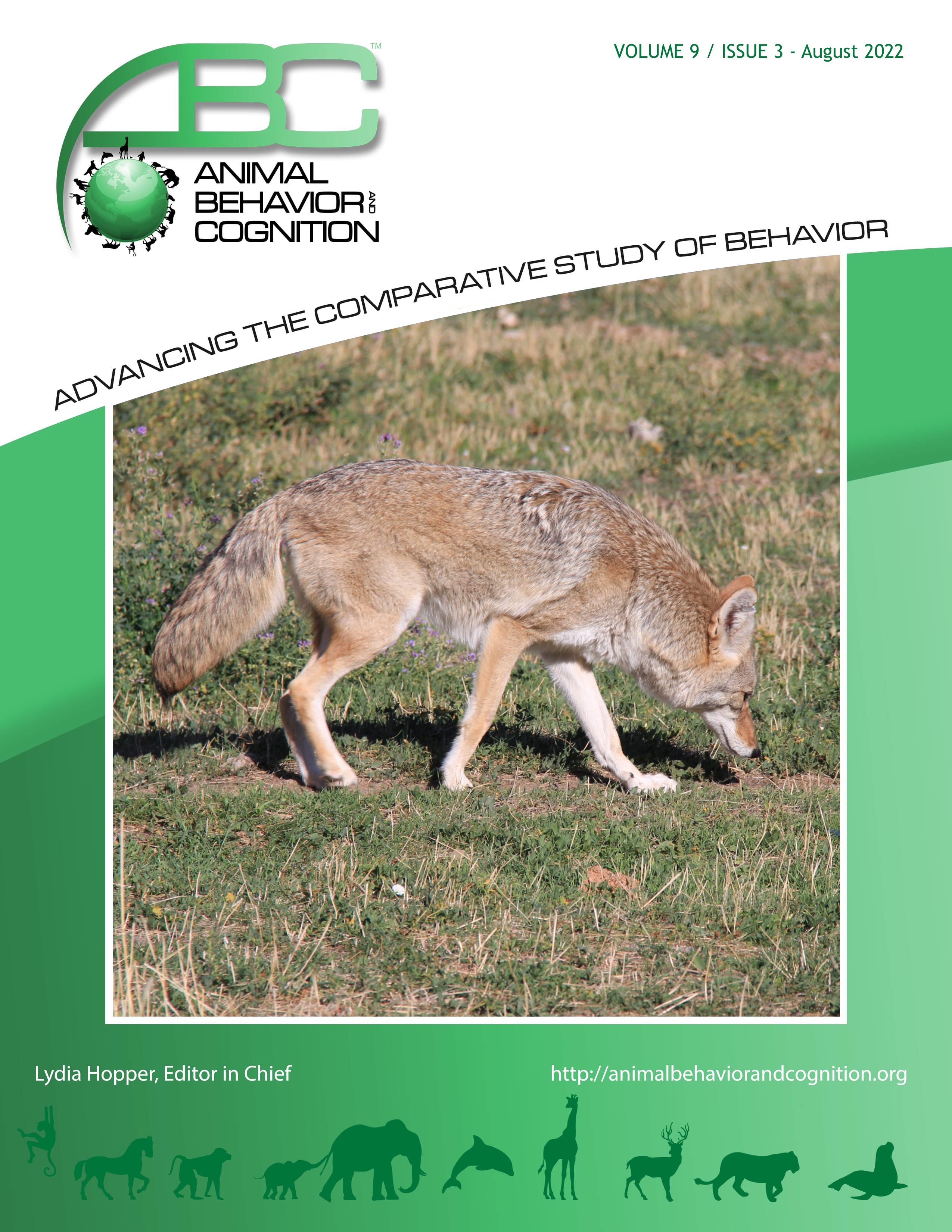Vol 9, Issue 3, August 2022
Floral Categorization by Bumblebees: The Perceptual and the Functional
Citation
Xu, V., & Plowright, C. M. S. (2022). Floral categorization by bumblebees: The perceptual and the functional. Animal Behavior and Cognition, 9(3), 316-335. https://doi.org/10.26451/abc.09.03.05.2022
Abstract
This study examines generalization and perceptual similarity judgments in bumblebees (Bombus impatiens) and addresses whether category formation of floral stimuli is based upon perceptual floral features alone or foraging experiences from reward associations. Previous experiments have found that bees transfer learning based on category membership, but little is known as to how membership is formed. Two experiments using twelve bumblebee colonies examined a) if bees were able to generalize between flowers with little or no perceptual similarity, and b) if bees were able to change which features of the flowers they generalize under different circumstances. All bees were given discrimination training in a radial arm maze using objects and corresponding photographs. Bees in Experiment 1 were trained to categorize stimuli based upon their reward associations while ignoring their perceptual features. Bees in Experiment 2 were trained to categorize either by floral type or dimensionality (2D vs 3D) of the stimuli. Results of tests using unrewarding stimuli revealed that bees were unable to group items without perceptual similarity cues. When perceptually similar flowers did not share the same reward, bees still generalized between them, regardless of experience. However, the reward values of the flowers were not spontaneously disregarded by the bees. Generalizations differed based on the bee’s experiences, although preferences for perceptual similarity remained. Bees grouped flowers based on the relevant features learned through experience rather than just relying on perceptual similarity, but also do not immediately discount similar flowers during foraging, giving a preliminary insight into the role of function in perceptual similarity judgments.
Keywords
Bumblebees, Categorization, Mediated generalization, Perceptual similarity judgement
